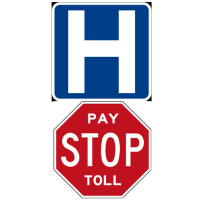Many Americans with Private Health Insurance Skip Necessary Treatments Due to High Deductibles

The Affordable Healthcare Act has made it possible for millions of Americans to get health insurance. Unfortunately, it hasn’t always made healthcare affordable, thanks to the proliferation of High Deductible Health Plans (HDHP).
Under HDHPs, the patient is responsible for a large portion of his or her healthcare expenses. The Internal Revenue Service classifies a plan as an HDHP if it has a deductible of $1,300 or more a year for an individual and $2,600 for a family. Many of the plans available through exchanges in the states have deductibles far higher, such as a “bronze” level plan available in Indiana that requires an individual to spend $6,300 a year before benefits kick in.
A report (pdf) by the Associated Press-NORC Center for Public Affairs Research showed that 1 in 8 Americans give up essentials such as food or burn through savings because they’re trapped in HDHPs. Twenty-three percent of those with HDHPs skipped a medical test or treatment recommended by their doctor, and 29% didn’t see a doctor when they became ill or injured.
The alleged intent of forcing so many costs onto patients is to make them better consumers of healthcare. Instead, studies have shown that those on the plans simply avoid getting non-preventative care, especially for their children. The American Academy of Pediatrics (AAP) is so concerned that it recommends that HDHPs be sold only to adults.
“HDHPs discourage use of nonpreventive primary care and thus are at odds with most recommendations for improving the organization of health care, which focus on strengthening primary care,” AAP said in a statement, according to Covering Health.
All plans are required to cover preventative care; that is, annual physicals. But if a problem is found during the physical, the meter starts running. A report (pdf) from The Commonwealth Fund showed that 13% of Americans have a deductible that amounts to 10% or more of their income. Those in lower income brackets are hit especially hard. Of those earning less than $22,980 a year, 46% cited at least one example of skipping needed health care because of their plan’s copayments or coinsurance: 28% did not fill a prescription; 28% skipped a medical test or follow-up treatment; 30% had a medical problem but did not go to the doctor; and 24% did not see a specialist when they or their doctor thought they needed one, according to Joseph Burns of the Association of Healthcare Journalists, citing the Commonwealth report.
“The results of this survey show that these trends toward greater cost-sharing, combined with little or no growth in median family income, have left many working Americans in the middle and lower end of the income distribution with large healthcare cost burdens,” the report’s authors wrote. “Cost-sharing in health plans is affecting people's medical decisions in ways that should be of concern to policymakers and the medical community.”
-Steve Straehley
To Learn More:
Parents Skipping Needed Care for Children, Pediatricians Say (by Joseph Burns, Covering Health)
Privately Insured in America: Opinions on Health Care Costs and Coverage (Associated Press-NORC) (pdf)
High-Deductible Plans Dominate Next Open Enrollment (by Bob Herman, Modern Healthcare)
Why Americans Pay More for Health Care and Get Less (by Noel Brinkerhoff, AllGov)
- Top Stories
- Unusual News
- Where is the Money Going?
- Controversies
- U.S. and the World
- Appointments and Resignations
- Latest News
- Trump to Stop Deportations If…
- Trump Denounces World Series
- What If China Invaded the United States?
- Donald Trump Has a Mental Health Problem and It Has a Name
- Trump Goes on Renaming Frenzy






Comments